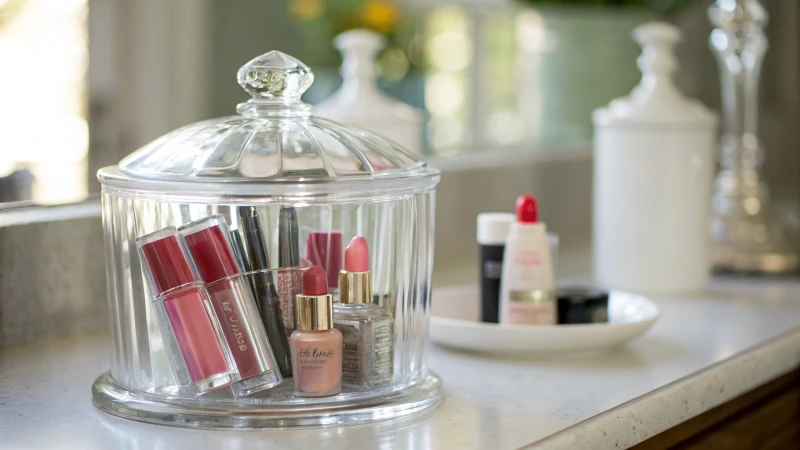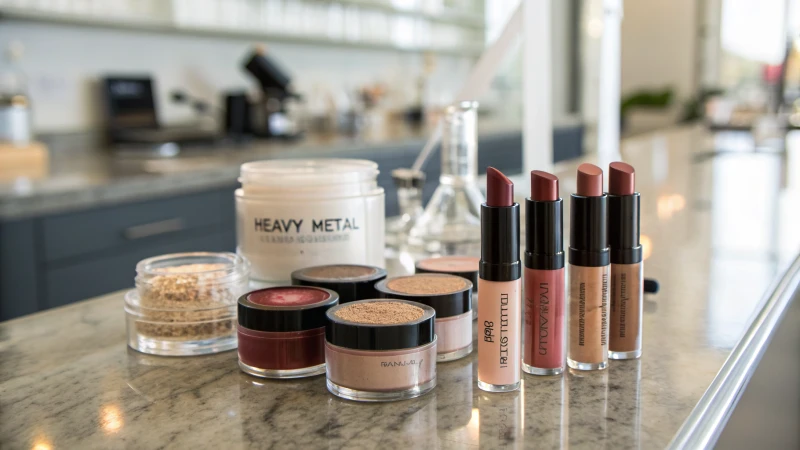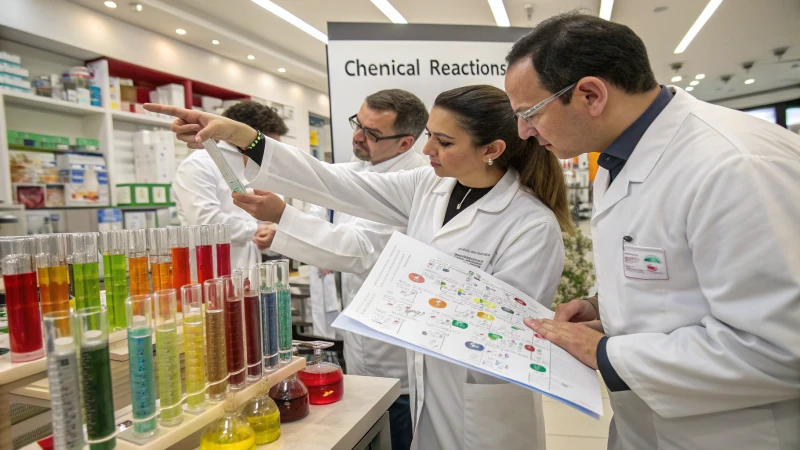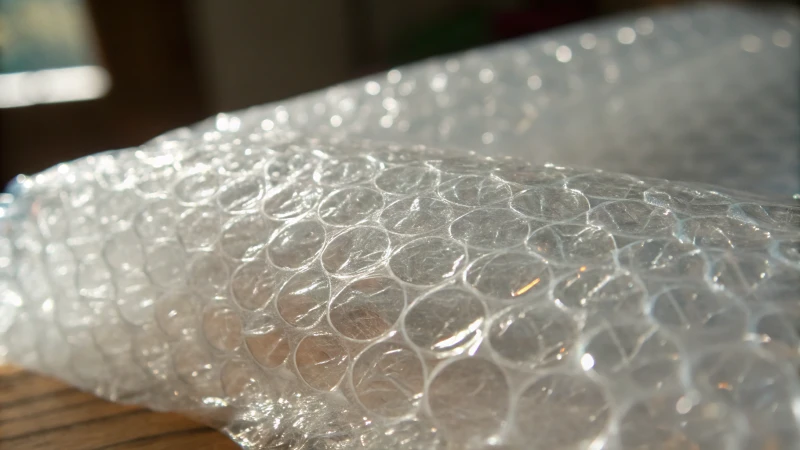
Imagine investing in a luxurious cosmetic product only to discover it’s been tainted by its own packaging. Intrigued? Let’s explore how glass impurities can impact your beauty regimen.
Impurities in glass materials, like heavy metals and organic residues, can lead to contamination and color changes in cosmetics. To ensure safe glass packaging, select reliable suppliers and conduct thorough contaminant testing.
From my journey in the world of glass packaging, I’ve learned how crucial it is to address these invisible threats. It’s not just about aesthetics; it’s about ensuring that every bottle maintains the purity of what’s inside. By focusing on the right suppliers and rigorous testing, we can protect the integrity of our products and, ultimately, our customers’ trust. Let’s delve deeper into strategies to safeguard our brands against these hidden dangers.
Impurities in glass can cause cosmetic color changes.True
Impurities like heavy metals can alter the appearance of cosmetics.
All glass packaging is naturally impurity-free.False
Glass can contain impurities, requiring testing to ensure purity.
How Do Heavy Metal Impurities Affect Cosmetic Products?
Ever wondered what lurks beneath the surface of your favorite lipstick or foundation?
Heavy metal impurities like lead and cadmium in cosmetics can cause skin irritation, allergic reactions, and potentially long-term health issues. They also alter product quality, including color and fragrance.

When I first discovered the impact of heavy metals in cosmetics, it felt like unlocking a hidden chapter in a book I’d been reading for years. Imagine buying that perfect shade of lipstick only to find out it’s a cocktail of chemicals that could irritate your skin or even have more serious health consequences. It’s unsettling, isn’t it?
Health Risks Associated with Heavy Metals
I remember the day I learned about lead and cadmium lurking in some beauty products. It was a wake-up call. These metals can cause everything from minor skin irritations to severe allergic reactions. And when we talk about long-term exposure, we’re diving into even scarier territory — think neurotoxicity or kidney damage. It’s why I always stress the importance of being informed about what we put on our skin.
| Metal | Potential Effects |
|---|---|
| Lead | Neurotoxicity, fragrance dullness |
| Cadmium | Skin irritation, color changes |
Impact on Product Quality
Aside from health concerns, heavy metals mess with the quality of cosmetics. I once had a perfume that went from enchanting to stale in a matter of months — all thanks to lead dulling its fragrance. And let’s not forget those unexpected color shifts in our favorite eyeshadows due to impurities like cadmium. For brands, especially those promising high-quality experiences, this is a deal-breaker.
Ensuring Product Safety
Navigating the cosmetic aisles can be daunting, but I always look for signs of safety. Manufacturers need to be vigilant with quality control, sourcing from reputable suppliers and conducting regular heavy metal content testing1. For me, seeing FDA and EU certifications2 on a product label offers some peace of mind.
Exploring Safe Alternatives
These days, I’m more inclined toward natural or organic beauty products. It’s not just about avoiding heavy metals; it’s about embracing cleaner, safer ingredients. I’ve started researching brands that prioritize ethical sourcing and transparency. Trust me, exploring options through trusted beauty directories3 can lead you to some hidden gems.
Staying informed and proactive is key. By understanding the risks and making conscious choices, we can minimize our exposure to harmful impurities in cosmetics.
Lead in cosmetics can cause neurotoxicity.True
Lead exposure is linked to neurotoxicity, affecting brain function.
Cadmium improves the color of cosmetic products.False
Cadmium causes color changes and inconsistencies in cosmetics.
How Do Fluoride and Organic Residues Affect Product Degradation?
Ever wondered why your favorite perfume doesn’t smell quite right anymore?
Fluoride and organic residues can degrade products by chemically reacting with ingredients, compromising quality. Fluoride may alter scents, while organic residues risk contamination and breakdown.

The Chemistry Behind Fluoride Interaction
I remember the first time I learned about fluoride’s impact on products; it was during a heated discussion with a supplier about why our perfumes were losing their allure. Fluoride is quite the reactive troublemaker, especially when it comes into contact with other compounds at high temperatures. In perfumes4, fluoride can reduce volatility, altering the scent and sometimes leading to a harsh odor that can really put off customers. I realized these reactions are more pronounced when the products are exposed to heat or UV light, which accelerates the breakdown of sensitive ingredients.
| Effect | Product Type | Consequence |
|---|---|---|
| Reduced Volatility | Perfumes | Altered fragrance |
| Harsh Odor | Cosmetics | Reduced consumer appeal |
Organic Residues and Their Impact
In another instance, we had a batch of skincare items that just didn’t seem to work as effectively. After much back-and-forth with the production team, we traced it back to organic residues like glue or additives reacting with active ingredients. It was a real eye-opener for me, highlighting how these residues can lead to degradation or loss of efficacy in skincare items5. When products are stored over long periods, these residues can also compromise the seal integrity, leading to leaks or deformation.
| Residue Type | Potential Reaction | Impact on Product |
|---|---|---|
| Glue Residues | Reacts with active ingredients | Degradation |
| Additives | Compromises seal integrity | Leaks, deformation |
Preventative Measures and Quality Control
Having learned these lessons the hard way, I’m now a stickler for quality control6. I insist on comprehensive chemical composition reports from suppliers, focusing on fluoride and organic residues. Regular inspections ensure that glass containers meet pollution-free standards, protecting our products from degradation.
Understanding these interactions and implementing stringent quality checks has been crucial in maintaining product longevity and keeping customers happy. It’s a small price to pay for peace of mind and customer satisfaction.
Fluoride reduces perfume volatility.True
Fluoride interacts with compounds, reducing perfume volatility and altering scent.
Organic residues improve product shelf life.False
Organic residues react with ingredients, leading to degradation and reduced efficacy.
How do microcracks and internal stress compromise packaging integrity?
Remember the last time you noticed a crack in your phone screen? Imagine that, but in packaging.
Microcracks and internal stress can compromise packaging integrity by creating tiny fractures that allow contaminants to infiltrate, affecting both the safety and lifespan of the product inside.

Understanding Microcracks
I remember when I first learned about microcracks in packaging materials—it was an eye-opener. These tiny, almost invisible fractures can occur during the manufacturing process or develop over time from mechanical stress. They’re like those little creases on an old book’s spine; you can’t see them immediately, but they weaken the structure.
- Increased Permeability: Microcracks can let air, moisture, and other unwanted elements sneak into the package. I’ve seen this happen with food packaging, leading to spoilage and bacteria growth.
- Structural Weakness: Like when my favorite mug finally shattered after years of wear, these cracks expand over time, making the packaging more susceptible to breakage.
Role of Internal Stress
Internal stress is another silent culprit that can undermine packaging integrity7. It’s the kind of stress that builds up within materials during production—like the tension you feel when you’re trying to multitask under pressure.
- Cracking and Shattering: I recall a time when a glass jar shattered unexpectedly in my hand because of uneven stress distribution. This happens when glass containers, for example, are exposed to uneven forces.
- Seal Integrity Issues: Have you ever struggled with a jar lid that just wouldn’t seal right? Packaging with internal stress can cause similar sealing problems, leading to leaks and contamination.
Prevention Strategies
To combat these issues, I’ve learned a few strategies over the years:
| Strategy | Description |
|---|---|
| High-Temperature Annealing | A process that heats materials to relieve internal stresses, improving durability against external impacts. |
| Automated Inspection Systems | Use technology to detect microcracks early in the production process. |
| Material Choice | Opt for materials with high resistance to stress and cracking, such as tempered glass or certain polymers. |
| Supplier Certification | Ensure suppliers provide certification for quality standards and stress testing results. |
By incorporating these strategies, businesses can significantly enhance their packaging’s resilience and minimize the risk of product failure8. It’s all about being proactive and vigilant—qualities I’ve come to appreciate deeply in my journey with Beautipak.
Microcracks increase packaging permeability.True
Microcracks allow air and moisture to enter, compromising integrity.
Internal stress improves seal integrity.False
Internal stress can prevent proper sealing, risking leaks.
How Can You Ensure Impurity-Free Glass Packaging?
Ever wondered how to keep your cosmetic products safe in glass containers?
To ensure impurity-free glass packaging, choose certified suppliers, ask for detailed testing reports, and maintain regular quality checks. These steps minimize contamination risks and boost product safety.

Choosing the right glass packaging isn’t just about aesthetics; it’s about ensuring the safety and integrity of the products inside. Let me share some insights from my own journey in this industry.
Select Certified Suppliers
When I first ventured into sourcing glass packaging, I quickly learned that partnering with the right supplier is crucial. I found myself poring over certifications like ISO 9001 and ISO 22000. These certifications gave me peace of mind, knowing that the suppliers adhered to high manufacturing standards, minimizing contamination risks.
- Testing Reports: I always request detailed heavy metal content testing reports9. It’s like checking a car’s history before buying; it ensures the glass containers meet safety standards.
- Third-party Verification: Getting certifications from reputable third-party testing agencies has been a game-changer for me, providing unbiased quality assurance.
Request Comprehensive Testing Reports
Understanding what’s in your glass is essential. I remember asking for complete chemical composition analysis reports when I started. It was a steep learning curve but vital for identifying impurities like fluorides or organic residues.
| Test Type | Purpose |
|---|---|
| Heavy Metal Content | Ensure compliance with safety standards |
| Optical Transparency | Verify clarity and absence of unwanted materials |
| Chemical Composition | Identify and mitigate harmful impurities |
Conduct Regular Quality Checks
A robust quality control system is non-negotiable. Regular inspections have become routine for me, using automated systems to spot microcracks or surface defects.
- Automated Inspection Systems: These systems ensure each batch is free from microcracks and surface defects10.
- Pollution-Free Standards: Regular cleanliness checks, focusing on organic residues, help maintain impurity-free standards.
Prioritize High-Quality Raw Materials
I can’t stress enough the importance of high-quality raw materials. Opting for low-iron glass has significantly reduced impurity levels in my packaging projects, especially for high-end cosmetics.
- Supplier Audits: Regular audits have become part of my routine, ensuring suppliers use premium raw materials.
- Material Certifications: I always request documentation verifying the purity of raw materials used.
By weaving these practices into my business, I’ve not only safeguarded the quality of my cosmetic products but also strengthened trust with discerning clients who value safety and quality. It’s about more than just maintaining product integrity; it’s about building long-lasting relationships with those who prioritize these values.
ISO 9001 certification ensures impurity-free glass.False
ISO 9001 ensures quality management, not specifically impurity-free glass.
Requesting heavy metal content reports reduces contamination risk.True
Testing reports verify safety standards, reducing contamination risk.
Conclusion
Impurities in glass packaging, such as heavy metals and organic residues, can contaminate cosmetics, altering their quality and posing health risks. Rigorous testing and supplier selection are essential for safety.
-
Learn how testing ensures cosmetic products are free from harmful heavy metals. ↩
-
Discover regulations that safeguard cosmetic products against toxic metals. ↩
-
Find reliable sources to explore brands offering safe, non-toxic cosmetics. ↩
-
Explore how fluoride affects perfume quality and stability. ↩
-
Learn about the impact of organic residues on skincare product efficacy. ↩
-
Discover effective quality control techniques for maintaining glass container standards. ↩
-
Explore how microcracks impact packaging, leading to compromised product safety. ↩
-
Learn strategies to prevent packaging failures due to microcracks and stress. ↩
-
Ensures safety compliance by understanding what heavy metals tests involve and their significance. ↩
-
Explores modern technologies used to detect microcracks, ensuring product durability. ↩



